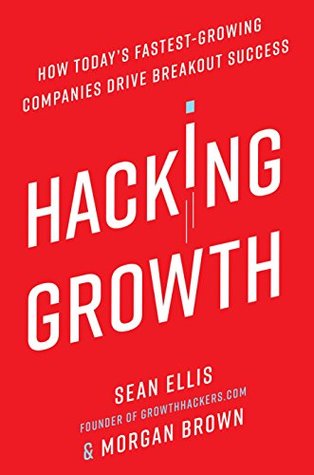More on this book
Community
Kindle Notes & Highlights
by
Sean Ellis
Read between
June 21 - July 27, 2020
Growth was about engineer[ing] systems of scale and enabling our users to grow the product for us.”
But growth hacking isn’t just about how to get new customers. It’s about how to engage, activate, and win them over so they keep coming back for more. It’s about how to adapt nimbly to their ever-changing needs and desires and turn them not only into a growing source of revenue, but also passionate ambassadors and an engine of word-of-mouth growth for your brand or product.
growth hacking is a team effort, that the greatest successes come from combining programming know-how with expertise in data analytics and strong marketing experience, and very few individuals are proficient in all of these skills.
customer churn (meaning identifying those who recently abandoned the product) might reveal that the people who are defecting haven’t made use of a particular feature of the product that is popular with avid users.
experiment with ways to get more people to try that specific feature out.
Growth cannot be a side project. Without clear and forceful commitment from leadership, growth teams will find themselves battling bureaucracy, turf wars, inefficiency, and inertia.
One of the cardinal rules of growth hacking is that you must not move into the high-tempo growth experimentation push until you know your product is must-have, why it’s must-have, and to whom it is a must-have: in other words, what is its core value, to which customers, and why.
but if you really want that long-term major user growth it’s got to start with a good product.
“love creates growth, not the other way around.”
product developers must be keenly aware of the danger of feature creep; that is, adding more and more features that do not truly create core value and that often make products cumbersome and confusing to use.
You’ve got to be listening and observing, not pitching.
Growth hacking is not about throwing ideas against the wall as fast as you can to see what sticks, it’s about applying rapid experimentation to find and then optimize the most promising areas of opportunity.
“If you can’t be extremely clinical and extremely unemotionally detached from the thing that you’re building, you will make these massive mistakes and things won’t grow because you don’t understand what’s happened.”
Linus Pauling said, “The best way to have a good idea is to have lots of ideas.”
The growth hacking process is designed to help discover the most cost-effective ways to acquire new customers—and then optimize those efforts to drive growth.
“How is this thing you’re showing me going to improve my life?”
Jobs understood that the core value, the magical aha experience, was carrying your entire music library around with you anywhere, all the time, totally hassle free.
many of the best hacks are unanticipated discoveries.
Influence: The Psychology of Persuasion.
The more information people put into the product, the more their commitment increases, through a concept called stored value. Much
The longer you retain customers, the more you can learn about them and their needs and desires, and thus the better you can tailor services and promotions to them, which of course allows you to earn more
retaining customers most fundamentally depends upon providing them with a product or service of high quality that continually addresses a need of theirs, or perhaps simply delights them, and which they come to regard as a must-have.
Companies with the opportunity to capitalize on the power of stored value have an advantage in increasing retention over time, but no company, even those with this built-in opportunity, can simply assume that customers will continue to be actively engaged.
it’s important that the features of the various plans can be easily compared with one another so that customers can evaluate readily whether or not the extra charge for any given plan above the basic level is worthwhile to them.
teams should experiment with a product option that is priced to help customers better understand the relative value of the items and plans you hope to sell.
people using price as a signal for quality, and it’s particularly common in markets such as technology and professional services.


